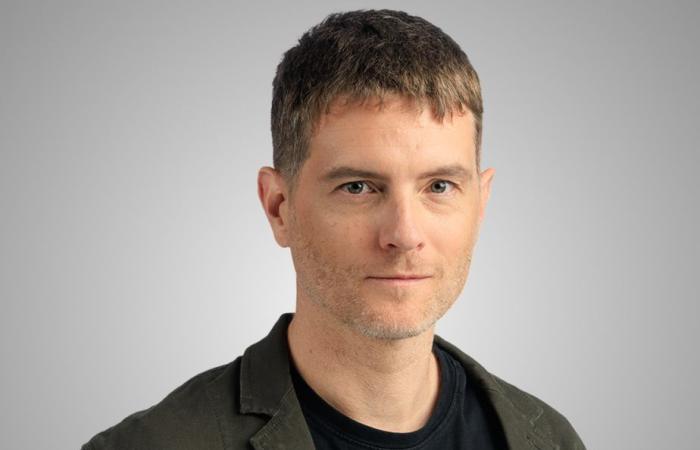Because current events often raise questions, a Dialogue columnist explores one for you.
Published at 7:00 p.m.
![]()
Is cutting down a tree an act of combating global warming? I heard this argument from people in the forestry industry while I was reporting on the Haute-Côte-Nord.
Since then, it has intrigued me.
I will let Marc Gilbert, co-founder of the Boisaco forestry cooperative in Sacré-Cœur, explain the thesis.
“A tree is a small factory that nature gives us to capture CO2he illustrates. All its life, it captures carbon and makes wood. But what biologists don’t say is that when the tree dies and falls, it rots and re-emits into the atmosphere all the carbon it has captured in its life. If we want to fight against global warming, we must therefore harvest the mature tree instead of letting it rot.
PHOTO EDOUARD PLANTE-FRÉCHETTE, LA PRESSE ARCHIVES
Marc Gilbert, co-founder of the Boisaco forestry cooperative
The carbon is then trapped in the wood, which will be used, for example, to build houses.
The logic seems implacable. The reality, however, is more complex.
“I’m a little irritated that the carbon argument is being used in this way,” says Évelyne Thiffault, a specialist in carbon sequestration and forest management at Université Laval.
She explains that it is simplistic to say that an old forest necessarily becomes a source of carbon. For some forests, this is true. For others, it is not.
“Some old forests continue to actively sequester carbon,” she says. “This is particularly the case with black spruce forests. A study conducted in Quebec shows that after 100 years, even 200 years, these forests are still carbon sinks.”
Old-growth fir forests, on the other hand, are generally carbon neutral. They release as much carbon as they capture.
“The question you ask is very interesting and even central,” says Christian Messier, professor of forest management and biodiversity at the University of Quebec in Outaouais.
PHOTO HUGO-SÉBASTIEN AUBERT, LA PRESSE ARCHIVES
Christian Messier, professor of forest management and biodiversity at the University of Quebec in Outaouais
He explains that the mistake foresters make is to only consider the carbon footprint of the tree and not of the forest as a whole. The soil, in particular, contains a lot of carbon.
However, cutting down trees disturbs this soil and releases large amounts of carbon. This is in addition to the wood residue that is left behind and decomposes.
“Data from Quebec and elsewhere show that after a harvest, the forest becomes a source of carbon for several years. It can be up to 10 or 20 years depending on the type of forest,” explains Professor Thiffault. The trees then become large enough to capture enough carbon and reverse the trend.
On this subject, Christian Messier reminds us that the climate emergency is now. And that if we have to wait 20 years for a cut forest to start capturing carbon again, we could end up losing out.
“Even if the balance sheet can be positive in the long term, we have this period during which we should try to reduce carbon emissions while waiting to make a transition to other energy sources,” he believes.
Planting trees after a harvest instead of waiting for natural regeneration can shorten the period during which the forest emits carbon.
“Except that if there is a lot of ground preparation before planting, it increases emissions [à cause du brassage de sol]”We don’t have much data on this in Quebec, we are currently studying it,” says Professor Thiffault.
In addition to the carbon argument, Christian Messier explains that old forests contain “a phenomenal diversity of plants, insects, mosses, lichens, birds, mammals, fungi, bacteria.”
For me, the main argument for preserving old forests is biodiversity.
Christian Messier, professor of forest management and biodiversity at the University of Quebec in Outaouais
One of the animals that benefits from this is the forest caribou, designated vulnerable in Quebec and whose preservation is the subject of intense debate.
“Old-growth forests, forests that are called overmature, are the preferred habitat of the woodland caribou,” says Martin-Hugues St-Laurent, a caribou specialist at the Université du Québec à Rimouski. “It is in forests that are more than 90 years old that caribou have the best survival.”
But be careful: this does not mean that the forestry industry must necessarily play the role of the villain in the fight against climate change. Professor Thiffault reminds us that each time we build something in wood, we avoid the use of concrete, steel or products of fossil origin – materials whose manufacture emits a lot of carbon.
Cutting down trees can therefore contribute to a reduction in emissions.
Christian Messier goes further. He believes that forests must be helped to adapt to the new realities of climate change – fires, insects, droughts, etc. To do this, he advocates planting new, more resistant species. And he believes that the forestry industry has a role to play in the development of tomorrow’s forests, for example by cutting down certain species to replant others.
“Logging could become a tool to accelerate the adaptation of our forests to the changes underway,” he says. “But that implies completely changing current practices.”
Professor Messier has just launched a research initiative called “Diverse,” supported by six forestry companies, which aims to test new approaches across Canada. He even mentions a “great reconciliation between environmentalists and the forestry industry” if we can mobilize the industry in forest management.
Although the idea of changing the species that grow in our forests is controversial, it must be admitted that the project is exciting.
In the meantime, let us be wary of shortcuts.
What do you think? Join the dialogue







